Mendocino, California
Among the many jewels of the rugged California coastline, the beautiful little town of Mendocino (visitmendocino.com) stands out for its rugged sea cliffs, charming New England–inspired cottages and serene seclusion. The town is just 150 miles up the coast from San Francisco, and 80 miles via the lovely Anderson Valley from the heart of the Sonoma Wine Country.
This cliff-top community is in the heart of a region where loggers, tourists, winegrowers, writers, farmers, hippies, yuppies and fishermen more or less coexist harmoniously. And while it’s not really a gay mecca, it does have a strong following among same-sex couples who appreciate the low-key vibe and alluring setting.
The most intriguing activities in coastal Mendocino County usually involve one kind of touring or another. You can rent mountain bikes, kayaks or canoes and explore the region’s rivers or country lanes. And you can hike along oceanfront bluffs that loom high over the frothy Pacific surf and watch whales during the spring and fall migrations. A great place for this is Mendocino Headlands State Park, an easy walk from downtown. Just north of Mendocino, the once-prosaic lumber town of Fort Bragg has lately gentrified with hip coffeehouses and fun restaurants. It’s also home to such attractions as the 47-acre Mendocino Coast Botanical Gardens (18220 North Hwy 1, Fort Bragg, 707-964-4352, gardenbythesea.com) and the historic 21-mile Skunk Train scenic excursion railroad (Laurel St, Fort Bragg, CA 95437, 707-964-6371, skunktrain.com), which passes through soaring redwood groves.
You can also go wine-touring in the adjacent Anderson Valley, whose cool climate is particularly suitable for turning out Chardonnay and Pinot Noir. Mendocino County Wine (mendowine.com) has information on tastings at dozens of vineyards open to the public. The region has no shortage of stellar restaurants. Occupying a dark, wood-paneled room with big windows overlooking colorful gardens, 955 Ukiah (955 Ukiah St, 707-937-1955, 955restaurant.com) serves sophisticated California-style cuisine. Also outstanding, the unassuming Moosse Café (390 Kasten St, 707-937-4323, themoosse.com), which is warmed by a fireplace, offers exceptional mod-American fare, and the MacCallum House (45020 Albion St, 707-937-0289, maccallumhouse.com)—also a nice place to stay—serves some of the most accomplished regional American food on the California coast.
Mendocino and nearby villages have a bounty of gay-friendly inns and B&Bs, with an emphasis on unpretentious, rustic luxury. The J.D. House (571 Ukiah St, 707-937-5266, jdhouse.com) is a lovely eight-room B&B surrounded by fragrant gardens, and with an invitingly simple and fresh country-chic aesthetic. Innkeepers Andrew Hindman and Damien Wood also run two sister inns, the Packard House (45170 Little Lake St, 707-937-2677, packardhouse.com) and Blue Door Inn (10481 Howard St, 707-937-4892, bluedoorinn.com). A stylish “eco-resort” with one of the country’s most acclaimed vegan restaurants (Ravens’), the Stanford Inn by the Sea (Coast Hwy and Comptche Ukiah Rd, 707-937-5615, stanfordinn.com) has a breathtaking location overlooking Mendocino Bay.
A short drive south of town near verdant Van Damme State Park, the gay-owned Glendeven Inn (8205 North Hwy 1, 707-937-0083, glendeven.com) looks like a Maine farmhouse and is surrounded by lush gardens and dewy meadows. Most of the rooms here have fireplaces and private decks overlooking the ocean. Another highlight is the gay-owned boutique resort Stevenswood (8211 North Hwy 1, 800-421-2810, stevenswood.com), which is nestled among tall trees and open meadows and has 10 rooms decorated in a light and airy contemporary style. A big draw here is the serene full-service spa. Also nearby is the 65-room Little River Inn (7901 North Hwy 1, Little River, 707-937-5942, littleriverinn.com), a rambling and comfy hideaway with a friendly staff and charming rooms. It’s perfect for a romantic getaway—rooms all face the ocean, and some have fireplaces and Jacuzzi tubs. –Andrew Collins
Portsmouth, New Hampshire
It’s one of the largest cities in New Hampshire, but Portsmouth still feels like a colonial village. Small fishing boats sail the wide Piscataqua River, historic streets are paved with bricks or cobblestones, and 18th-century homes are as common as lobster rolls in this quaint seaside town, which English merchants settled in 1630.
Though Portsmouth is home to a massive naval shipyard and former Air Force base, tourists hardly notice. They’re here to soak up American history, taste craft beers, explore the notable restaurant scene and take a boat out on the water. Portsmouth’s small scale means you can do all of these things in a long weekend—which is perfect for an early-fall getaway.
The city offers two types of lodgings: affordable chain hotels situated a couple miles north of town, and slightly more expensive bed-and-breakfasts downtown. In the former category, America’s Best Inn (383 Woodbury Ave, 603-431-4400, americasbestinnportsmouth.com) provides immaculate, no-frills rooms with free Wi-Fi and continental breakfast just off I-95. A Holiday Inn (300 Woodbury Ave, 888-465-4329, ihg.com) and Best Western Plus Wynwood Hotel and Suites (580 US Hwy 1 Bypass, 603-436-7600, wynwoodportsmouth.com) are next door.
Downtown, check into the gay-owned Ale House Inn (121 Bow St, 603-431-7760, alehouseinn.com), a former brewery warehouse built in the late nineteenth century. The luxury perks include in-room iPads, Dwell Studio linens and free use of the inn’s Trek bicycles.
The Martin Hill Inn (404 Islington St, 603-436-2287, martinhillinn.com) envelops guests in Victorian elegance; rooms feature antique four-post beds and original pine floors dating from 1820. The hotel’s lush pocket garden offers a shady spot for conversation.
Portsmouth is easily navigated on foot, the recommended mode of transportation if you want to experience the city’s vintage atmosphere. See the evolution of Portsmouth at Strawbery Banke (14 Hancock St, 603-433-1100, strawberybanke.com), a huge open-air museum of historic buildings and gardens illustrating 350 years of the city’s history at the site of the first English settlement.
Step inside restored 18th-century houses and marvel at the low ceilings, tight stairways and miniscule rooms that demonstrated middle-class prosperity back then. Fast-forward a few centuries at the site’s Marden-Abbot House and Store, a dry-goods shop circa World War II stocked with vintage groceries. Docents are always eager to explain each building’s story.
You’ll need refreshment after a morning at Strawbery Banke. Dig into a hearty New England lunch at the Common Man (96 State St, 603-334-6225, the cman.com), a New Hampshire-born chain featuring Yankee specialties. Try the lobster sliders with Vermont cheddar or Uncommon Steak Oscar with crab, broccoli and béarnaise sauce. Vegetarian and gluten-free options are plentiful. Locals also love the Rusty Hammer (49 Pleasant St, 603-436-9289, therustyhammer .com), a casual bar and grill with a fried haddock sandwich that practically melts in your mouth. Wash down your meal at the Portsmouth Brewery (56 Market St, 603-431-1115, portsmouth brewery.com). The brewpub resurrected Ports-mouth’s dormant brewing heritage in 1991, and now features local beers like the extra-hoppy Smuttynose FinestKind IPA along with a menu of upscale bar snacks.
Narrow streets branching off Market Square, the traditional city center, are packed with antique stores, coffee shops, artisan’s galleries and cafes. Browsing the quirky merchandise could easily take all afternoon, but save time for a relaxing walk through Prescott Park, a stunning public garden on the bank of the Piscataqua River that frequently hosts outdoor concerts, movies, dance performances and festivals. The Fifth Annual New Hampshire Brewfest takes place October 19. Just over a short bridge from the park lies Peirce Island, a quiet recreation area with great views of Portsmouth Harbor and fishing boats on the river at sunset.
Numerous fishing charters, whale-watching companies and cruise operators entice visitors for whom merely walking along a shoreline path is not enough. The Gundalow Company (60 Marcy St, 603-433-9505, gundalow.org) gives public sails on its Gundalow Piscataqua, a replica of the flat-bottomed cargo barges that were once common on New Hampshire’s coastal estuaries. On most trips, landlubbers can see the crew haul up lobster traps or help navigate on inland rivers.
Twenty minutes south of Portsmouth, get a close-up view of marine mammals on a Granite State Whale Watch cruise, leaving from picturesque Rye, N.H. (1870 Ocean Blvd, Rye, 603-964-5545, granitestatewhalewatch.com). The speedy boat takes passengers to Jeffrey’s Ledge, an offshore bank that is a hotspot for whales, dolphins, porpoises, sharks and seabirds.
Getting to Portsmouth requires a car, but it’s an easy one-hour drive from Boston; Portland, Maine; and Manchester, NH. On your way north, stop at the state tourism outpost in Seabrook, NH for maps and info. –Kat Long
Buffalo, New York
Why Buffalo? That’s a question I was asked several times before my recent trip to the Queen City. A lot of people, even native Buffalonians, point out this industrial city’s decline in the mid-20th century. Once a bustling metropolis powered by steel mills and shipping—and a Gilded Age attitude—Buffalo’s fortunes went downhill after World War II with the decline of those industries. Today, however, a homegrown group of up-for-anything entrepreneurs are replacing despair with innovative arts projects and creative small businesses. It worked in Brooklyn. So why not Buffalo?
Downstaters may not realize that Buffalo is an undiscovered gem, packed with architectural heritage, world-class art museums, beautiful parks and civic zeal. Young Buffalonians see promise in their city. As Newell Nussbaumer, founder of the BuffaloRising.com blog, told me, “You can start up any project with no money. It’s affordable and people want to help and get involved.” That attitude has created a thriving LGBT community, active DIY arts scene and even Rusty Chain beer (sales from the brew fund a community-based bike-share program).
But let’s start at the beginning. Buffalo is an architecture buff’s dream. Like Chicago but on a manageable scale, Buffalo is home to exquisite works by the heavyweights of Gilded Age building—Frank Lloyd Wright, Louis Sullivan and H.H. Richardson. No visit to Buffalo would be complete without exploring Wright’s gorgeous Martin House Complex (125 Jewett Pkwy, 716-856-3858, darwinmartinhouse.org). Restored to its 1907 glamour, the home was built for a Buffalo soap magnate, Darwin Martin. The art-glass windows and the fireplace mosaic feature a graceful wisteria motif. Almost 80 fixtures and pieces of furniture have been restored to Wright’s exacting design, including his iconic barrel chair.
About 20 minutes south of Buffalo on Lake Erie, the Martin family asked Wright to build their country estate, Graycliff (6472 Old Lake Shore Rd, Derby, 716-947-9217, graycliffestate.org). Completed in 1929, the summer home evinces a more relaxed feel than their city dwellings. Wright’s signature way of blurring the boundaries between architecture and nature are in full view. The total refurbishment of the estate, currently in progress, gives visitors a rare glimpse at the process of bringing an architectural treasure to life.
Back in town, more evidence of Buffalo’s rebirth appears at the imposing Richardson Olmsted Complex (Forest Ave between Rees St and Elmwood Ave, 716-849-6070, Richardson-olmsted.com). This massive H.H. Richardson-designed building opened in the late 1880s as the Buffalo State Asylum for the Insane, with the grounds sculpted by famed landscape architect Frederick Law Olmsted. Despite its Romanesque bearing, the building is filled with natural light. A full restoration is underway, and visitors can sign up for tours of the wards and gardens. In a few years, the complex will house the Buffalo Architecture Center, a boutique hotel and event space.
Another stop on your tour of Buffalo’s cultural highlights should be the elegant Albright-Knox Gallery (1285 Elmwood Ave, 716-882-8700, albrightknox.org), a below-the-radar museum whose 20th-century collections could rival MoMA’s. Masterpieces by Pollock, Brancusi, Picasso, Warhol, Matisse, Dali, Van Gogh—the list goes on—join works by today’s most celebrated artists, such as Catherine Opie, Carrie Mae Weems, Lorna Simpson, Nikki S. Lee, Martin Puryear, Kiki Smith, Rachel Whiteread and dozens more. Across Elmwood Avenue from the Gallery, the Burchfield Penney Art Center (1300 Elmwood Ave, 716-878-6011, burchfieldpenney.com) exhibits Western New York artists in an airy space designed by architect Charles Gwathmey.
Buffalo’s current art scene pulls inspiration from the city’s industrial past. Canalside (canalsidebuffalo.com), a $295 million upgrade to Buffalo’s historic waterfront, will transform the former western terminus of the Erie Canal with replica canals, restaurants and museums in a park setting. The waterfront also hosts 800 events a year, from outdoor yoga to major concerts. Not far away, Buffalo’s forest of vintage grain elevators—once used to store Midwestern crops during the heyday of Great Lakes shipping—has been turned into Silo City, an arts campus along the Buffalo River. It’s home to Elevator B (hivecity.wordpress.com), a custom-built bee hive; Silo City Rocks (silocityrocks.com), the forthcoming man-made rock wall that organizers claim will be the world’s tallest; and the annual festival City of Night (cityofnightbuffalo.com), which brings together art, music, installations, light projections, live performances, food trucks and thousands of Buffalonians every August.
Locals love to praise Larkinville (larkinsquare .com), a collection of former Larkin Company mail-order warehouses that have been converted into offices and a quirky public art space. Cafes are housed in a former gas station and a revamped Airstream trailer. The eclectic list of events, ranging from bike races to book talks to gigs by local bands, is very popular with the after-work crowd.
Buffalo’s gay scene holds down the east end of Allen Street in the Allenville neighborhood, where you’ll find a bohemian atmosphere and several LGBT bars. The city’s sole lesbian bar closed earlier this year, and none, sadly, has stepped up to replace it—but women are welcome at Buffalo’s mixed gay bars. Patrons give Fugazi (503 Franklin St, 716-881-3588) props for classy décor and a martini list that’s long on the fruity/sweet flavors. Celebrating its tenth year, Q Buffalo (44 Allen St, 716-332-2223, qbuffalo .com) brings in a mixed crowd that is about 40 percent women on any night of the week. The bartenders are attentive but not pushy; the atmosphere is casual and friendly. A few doors down, Cathode Ray (26 Allen St, 716-884-3615) sports an 80’s-style neon entryway, and the vibe continues inside. Drinks tend toward the tropical and oversized.
As New York’s second-largest city, Buffalo boasts top-notch hotels that are centrally located to all of the city’s hotspots. Affordable and comfortable lodgings close to Niagara Square and City Hall are abundant. The Hampton Inn and Suites Downtown (220 Delaware Ave, 716-855-2223, hilton.com) offers extra-spacious rooms (many with Jacuzzis!), heavenly soft bedding and free coffee 24/7. Just over a year ago, The Lafayette (391 Washington St, 716-853-1505, thehotellafayette.com) unveiled the $43 million restoration of this important landmark—it’s the most significant work by America’s first female professional architect, Louise Blanchard Bethune—including The Hotel @ The Lafayette. Blending ultra-modern and Gilded Age décor, the Hotel @ Lafayette is Buffalo’s snazziest address. Locals also rave about the Mansion (414 Delaware Ave, 716-886-3300, mansionondelaware.com), the city’s most elite hotel. In the cloistered luxury of its Second Empire-style inn, you can pretend you’re a steel tycoon when ordering complimentary 24-hour butler service or a fancy cocktail.
Buffalo has much to offer for arts-inclined visitors, and you can find more trip-planning info at visitbuffaloniagara.com. And you thought this place was just for chicken wings.
–Kat Long
Tybee Island, Georgia
Every bit as quirky, laid-back, and personable as historic Savannah, which lies just a 20-minute drive inland, Tybee Island (visittybee.com) is one of Georgia’s famed barrier islands, an idyllic locale for beach-bumming, fishing or boating. In May 2013, this colorful beachside community hosted its first Tybee Gay Days (gaysavannah.com/tybee-gay-
Even if you don’t go when Gay Days are on, you’ll find a wealth of gorgeous beaches, natural areas and historical attractions on the island. You can’t miss the Tybee Lighthouse (30 Meddin Ave, 912-786-5801, tybeelighthouse.org), a 270-year-old beacon on a charming five-acre property. While the lighthouse undergoes a renovation beginning this fall, visit the nearby Tybee Island Museum, which demonstrates the island’s long history from Spanish settlement in the early 1500s to today. The classic Tybee Pier and Pavilion (Strand Ave, 912-652-6780) is the island’s people-watching hotspot, as well as an ideal fishing pier and stage for performances and concerts.
You’ll find plenty of condo and cottage rentals on this compact island, making it a popular destination for extended stays with groups of friends. One very good option is the LGBT-friendly Beachside Colony Resort (P.O. Box 1594404, Butler Ave, 912-786-4535, beachsidecolony.com), which has upscale one-, two-, and three-bedroom condos set among eight different buildings and adjoins the lesbian-owned restaurant and bar, Marlin Monroe’s Surfside Grill (404 Butler Ave, 912-786-4745, marlinmonroessurfsidegrill.com


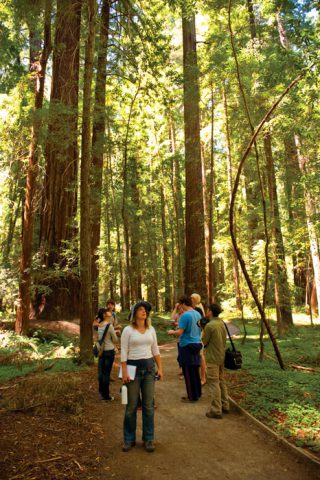
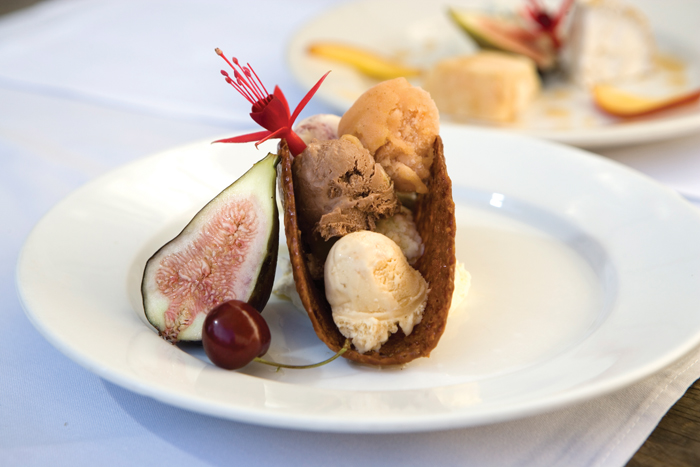

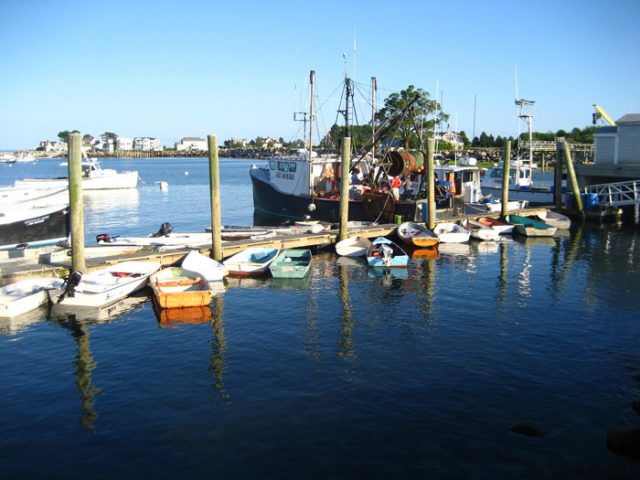
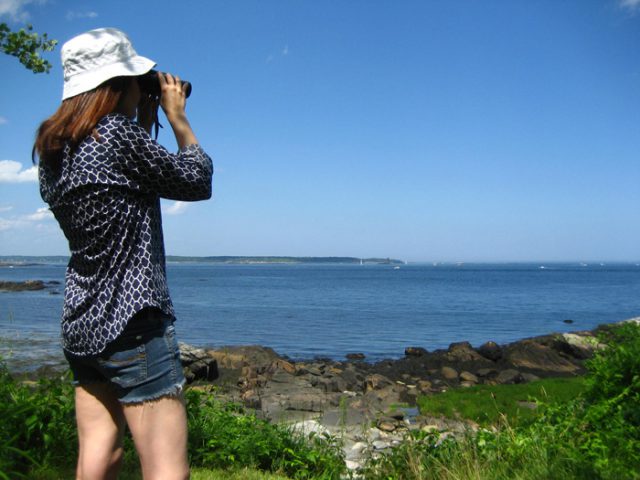
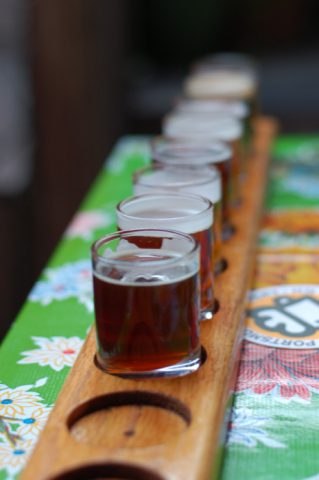
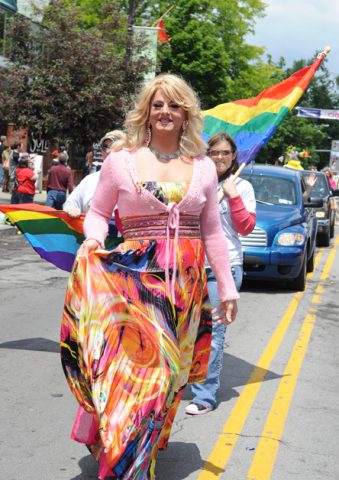
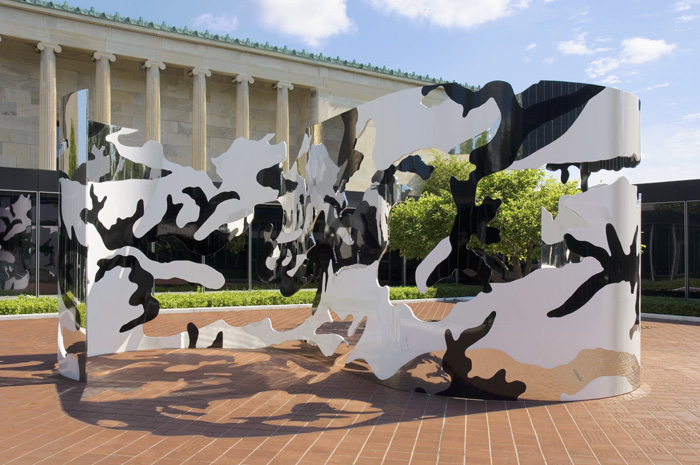
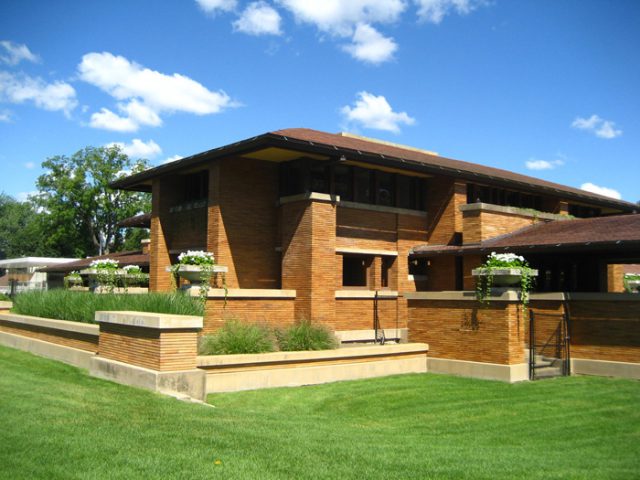
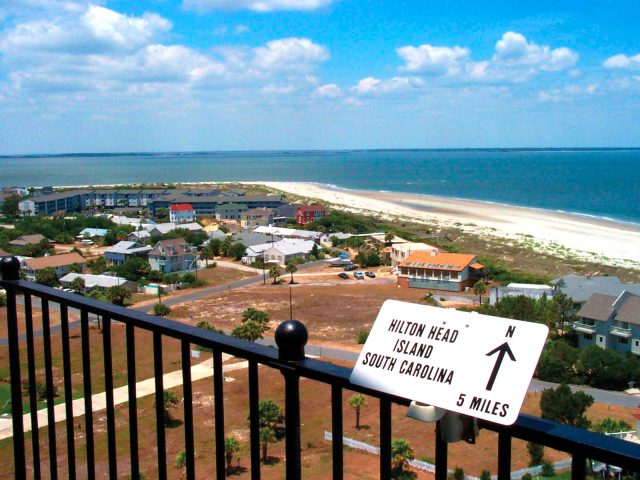
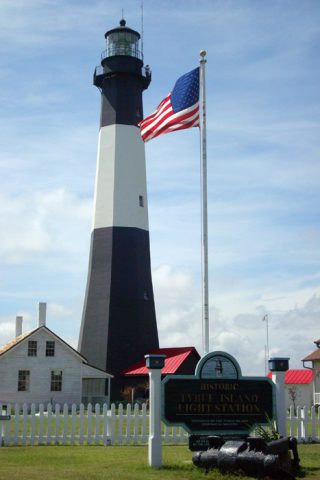

What Do You Think?